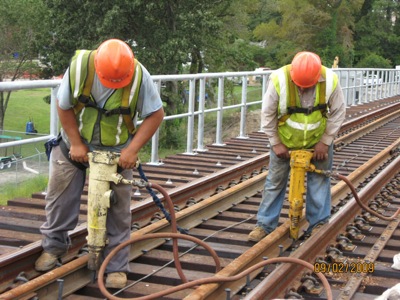President Obama’s state of the union speech yesterday focused on creating jobs (a word he used at least 25 times). On the same day, Steve Jobs presented Apple’s revolutionary and magical iPad. Which will have a more positive effect on people’s lives?
Let’s look at their track records. When President Bush was inaugurated as president, 130 million Americans had jobs. By the time he left office, it was 134 million, not a big increase, but not a decline either.
The first thing President Obama did was to persuade Congress to pass a $787 billion stimulus package in order to “save jobs.” As of December, only 130.9 million workers still had jobs, 3.4 million less than when Obama took office. You can blame that on Bush, you can blame it on whatever you want, but the fact is that Obama promised to create jobs and instead we lost millions of them. At least some people would argue that one reason the economy hasn’t recovered more quickly is that businesses are unwilling to make investments in an unpredictable political environment.









